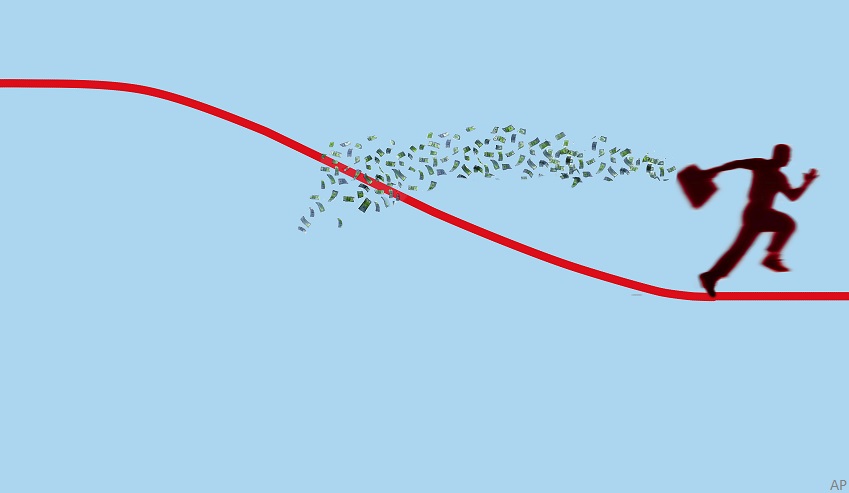
The 8th of March is International Women’s Day, and it's the perfect time to talk about women and finance – especially for those women within the financial sector. Because women need to think about money differently.
For one, women need to plan for different circumstances than men. They have longer lifespans, tend to be caregivers for both parents and children, and as a result, may take breaks from the workforce. Even when we do work, we tend to earn less.
According to the Government of Canada, women in Canada who work full-time earn on average only 87 cents to every dollar earned by men. This study was from 2018, but recently, the numbers are not much better. A 2021 ADP ledger study found that women continue to earn 23% less in total income (pre-tax salary and other compensation) than men. Women's pre-tax salaries remain 21% lower than men's, while additional variable compensation, such as bonuses, profit-sharing or equity agreements, is where disparity surges, with Canadian working women earning 43% less in additional compensation compared to men in 2020.
To attempt to fight this, last year, the government’s Pay Equity Act went into effect. Now, employers in federally regulated sectors with 10 or more employees will have three years to identify and correct pay disparities within their workforces. The regulations make employers conduct thorough reviews of their workforces with the goal of providing employees "equal pay for work of equal value,” and “consider the skill, effort, responsibilities, and working conditions of those jobs.”
Moreover, the CFA Institute recently released its Diversity, Equity and Inclusion Code for the U.S. and Canada, which invites financial services firms to commit to six core principles that drive greater equality within the investment industry. In their release document, the CFA institute noted that the need for principles in this area was accelerated by the murder of George Floyd and the increased focus on Indigenous Rights in Canada.
These are both good steps, and much needed, because everything got worse with the coronavirus. A 2021 Statistics Canada report found that women tended to be more affected by the COVID-19 pandemic than their male counterparts. On average over the study period, women accounted for 53.7% of the year-over-year employment losses. It’s hard to pay a person, whatever their gender, if they are forced to leave the workforce entirely.
One area where women are particularly absent from the workforce is in mutual fund management. The gender ratio is so skewed that close to 90% of the managers are men.
Women and Mutual Funds in Canada
My colleague Ian Tam, who is Morningstar’s Director of Investment Research, and I ran the numbers for Canadian mutual funds. Using data from Morningstar Direct, we analyzed named portfolio managers for all Canadian-domiciled mutual funds (a universe of 21,000+ share classes). From this, we found a total of 1469 managers, not all of whom are based in Canada. Unsurprisingly and yet disappointingly, the number of funds that have at least one long-tenured female portfolio manager in Canada is dwarfed by those that do not.
Looking at the broad universe of managers, we found that there were 1,284 male portfolio managers,and only 175 female portfolio managers.
.png)
Put another way, that’s one woman for every seven men managing your money.
In terms of asset management firms, TD has the maximum number of women managers at 12 (45 men) while SLGI Asset Management, BMO Investments, and RBC AGM have 10 women managers each (59, 48, and 43 men). Fidelity Investments Canada has 9 women managers (61 men), while CI Investments has 8 women managers (66 men).
According to Morningstar Direct data, Canoe Financial has no women fund managers - and 21 men. National Bank Investments, AGF Investments, Leith Wheeler Investment Counsel, Purpose Investments, and 1832 Asset Management have one women manager each. Beutel Goodman & Company has three women managers and 17 men - an earlier version of this article said the firm had one woman manager.
This can be a problem. "When it comes to investments, having a diverse set of team members ensures that investment decisions are made considering a broad set of views. Arguably, having a homogenous group of managers at a firm might skew opinions in a single direction, ignoring important qualitative inputs into an investment decision,” Tam says.
The reasons for this disparity are myriad, some social, some institutional, some innate. It isn’t because women don’t excel – they do. And some argue that this problem could be an opportunity.
“The pandemic has certainly put a spotlight on the challenges women face in the workplace, but it has also created opportunities. With companies becoming increasingly aware of diversity and equality gaps, a broadened corporate perspective opens doors for future female fund managers. Women currently in those roles should continue to seek mentorship opportunities, while those curious about the career path should be empowered to explore it via networking,” said Danielle LeClair, Director of Manager Research for Morningstar Canada.
What to Do?
Last year, Jackie Porter wrote about the financial costs of being a woman. In it, she suggested six steps to level the playing field – flexibility, empathy, mentorship, learning, pay parity, and structural and organizational change.
It’s a start.





















